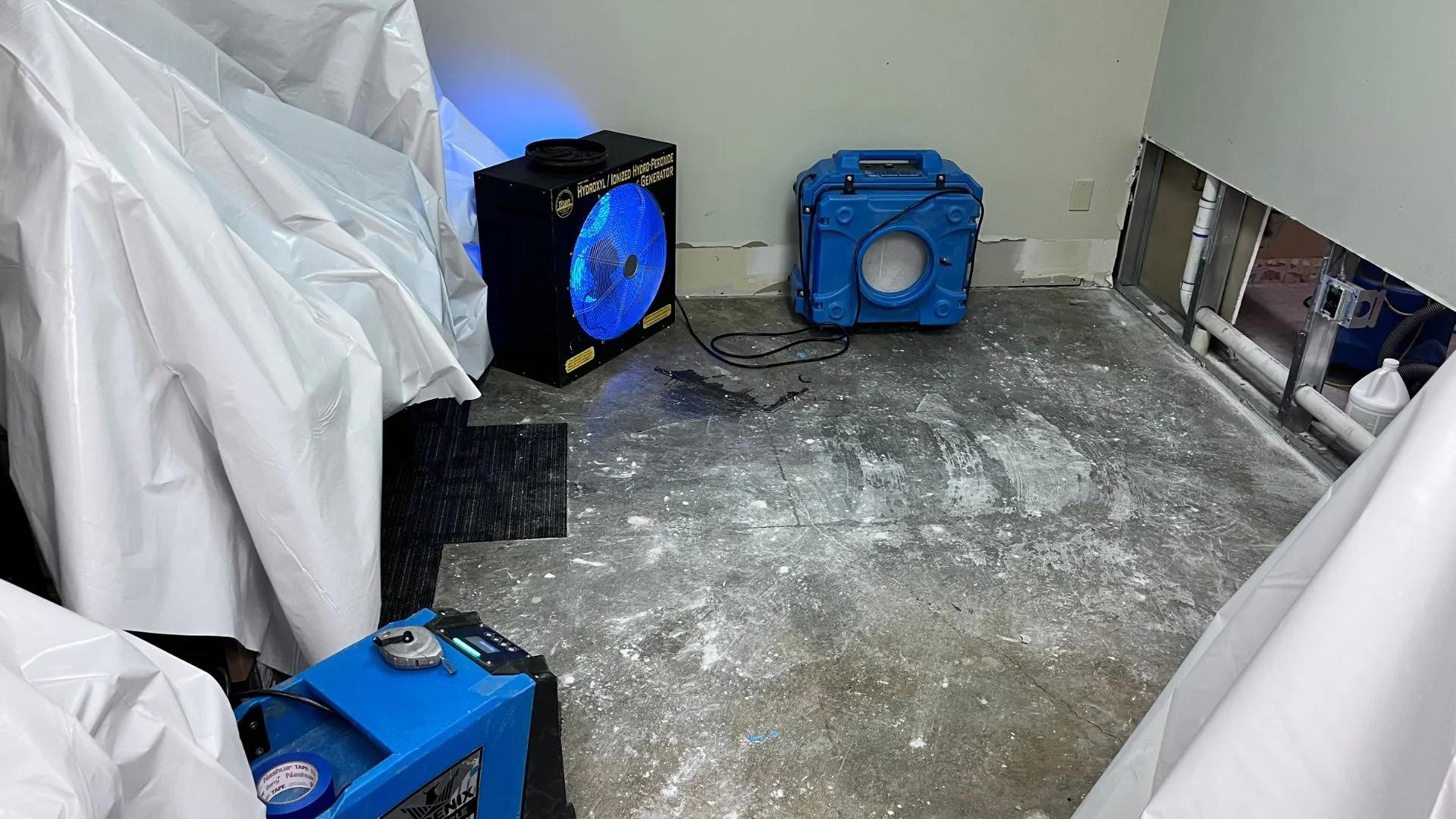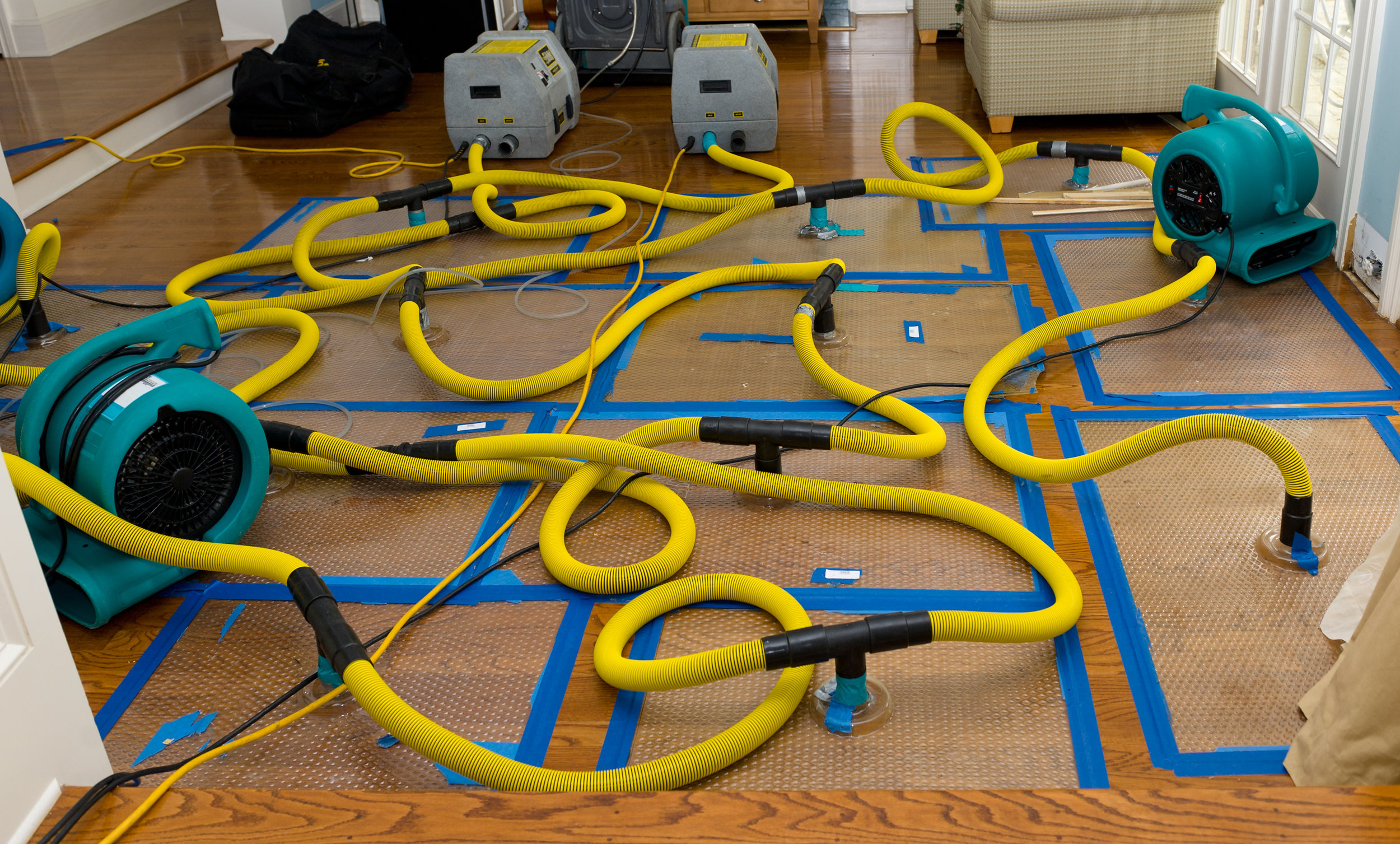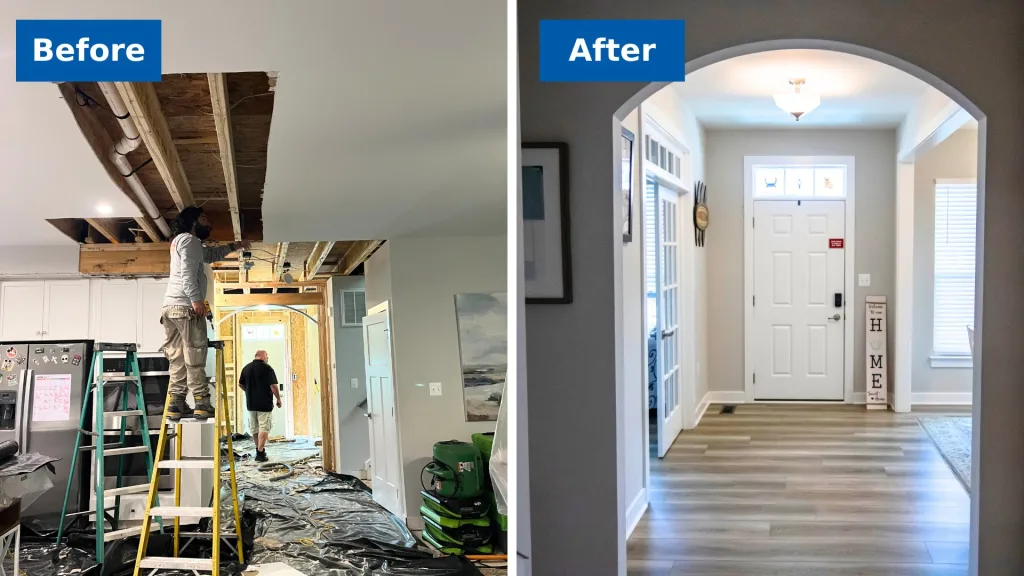What Happens If You Postpone Flood Damage Restoration? The Hidden Costs Explained
Necessary Actions to Follow for Efficient Water Damages Restoration in Your Home
When encountered with water damage in your home, understanding the vital steps for efficient restoration can make all the distinction. You need to examine the damage and guarantee safety and security before taking on the issue. Stopping the resource of water is essential, but it's simply the start. There's a series of actions you must take to shield your building from more concerns once you have actually handled that. Let's explore what you need to do following.
Evaluate the Damages
When you discover water damages in your house, the primary step is to assess the damages thoroughly. Begin by determining the resource of the water breach. Inspect for leakages, ruptured pipelines, or various other issues creating the issue. Next, check out the impacted areas for noticeable indicators of damage, including mold, bending, or staining development. Don't forget to look in concealed spots like behind wall surfaces or under floor covering, as water can seep right into these locations unnoticed.Document the damages by taking clear photos and notes. This will certainly help you when reviewing the scenario with your insurance policy supplier or repair professionals. Focus on the type of materials impacted, as different materials call for different remediation strategies. Examine the degree of the damage. Is it considerable or small? Recognizing the range will certainly direct you in determining whether to manage it yourself or hire the specialists for an extra extensive restoration procedure.

Make sure Security
Prior to you begin any remediation job, ensuring your safety is crucial. Examine the condition of your home. If the water's deep or if you discover electric hazards, do not enter the area. Shut off the power and gas supply to prevent crashes. Wear protective gear like gloves, boots, and masks to secure on your own from contaminants or mold.It's important to stay familiar with your environments; look for unsafe surface areas and sharp things. If the water is from a sewer back-up, treat it as contaminated materials. Maintain youngsters and pets far from impacted areas to prevent exposure.Once you've taken these precautions, you can wage the repair process. Keep in mind, your security comes initially, and if you're ever before not sure, it's ideal to seek advice from an expert. Taking these steps will certainly assist assure you're prepared to take on the reconstruction securely and properly.
Stop the Resource of Water
After ensuring your safety and security, the following step is to quit the source of water. Recognize where the leak is originating from. Maybe a ruptured pipe, a defective device, or even heavy rainwater going into via a harmed roofing. If it's a pipes problem, switch off the main water system to your home to prevent more flooding. For home appliances, unplug them and shut down their water valves.If the source is outside, like rain, attempt to divert it far from your home making use of sandbags or various other obstacles. For minor leakages, you might be able to utilize tape or a sealer temporarily up until a specialist can repair it. Remember, dealing with the source quickly is important to lessening damages and protecting against mold and mildew development. Once you've quit the water, you'll remain in a better setting to relocate on to the next steps in the reconstruction procedure.

Remove Excess Water
Act promptly to eliminate excess water, as standing water can bring about much more extensive damages and mold development. First, collect your tools: a wet/dry vacuum, pails, and towels. You can use towels to saturate up the moisture if the water is shallow. For much deeper water, a wet/dry vacuum is your best option. Ensure to clear the vacuum cleaner frequently to stay clear of overflow.If the water is polluted, like from a sewer backup, use safety equipment, consisting of gloves and masks, to keep yourself risk-free. As soon as you've removed as much water as possible, examine for surprise pockets of wetness in edges and under furnishings, as these can nurture mold.Don' t forget to turn off electrical home appliances and power electrical outlets in damp locations to stop dangers. This first action is crucial in reducing damage and establishing the phase for an effective reconstruction procedure.
Dry and Dehumidify the Location
It's necessary to completely dry and dehumidify the area completely when you've eliminated the excess water. Beginning by using dehumidifiers successfully to draw wetness out of the air and protect against mold growth. Watch on humidity degrees to ensure the room dries out completely.
Eliminate Standing Water
To effectively take on water damages, you need to concentrate on getting rid of standing water as rapidly as feasible. Beginning by gathering required tools, like a wet/dry vacuum or a pump, relying on the volume of water. A vacuum needs to do the method if check here the water is superficial. For larger quantities, a pump is a lot more efficient. While working, see to it to put on protective gear to maintain on your own safe from pollutants. As you eliminate the water, pay interest to hidden locations like under furniture or in edges where water may collect. Once you have actually gotten rid of the majority, your area will begin to dry. This step is vital, as remaining water can lead to mold and mildew growth and a lot more substantial damage.
Usage Dehumidifiers Effectively
Just how can you efficiently use dehumidifiers to completely dry and dehumidify your room? Begin by positioning your dehumidifier in the most damaged area, preferably where water damage is most serious. Make certain to close all doors and windows to develop a covered atmosphere. Switch on the dehumidifier and established it to the suitable humidity level, typically around 30-50%. Vacant the water collection storage tank regularly, or think about making use of a design with a continual drainage option for ease. Preferably, utilize followers to improve airflow, assisting the dehumidifier job much more successfully. Keep the dehumidifier running until you're certain that the location is extensively dried, preventing mold growth and extra damages (Water Damage Cleanup). This step is important for efficient water damage repair
Monitor Humidity Levels
Tracking humidity levels is important throughout the drying out procedure, as it helps assure your room continues to be totally free from excess dampness. Purchase a trustworthy hygrometer to track humidity accurately. Preferably, you want to maintain degrees between 30% and 50%. You might require to change your fans or dehumidifiers to enhance air flow if humidity readings climb over this array. Examine the analyses frequently, particularly in areas prone to moisture, like cellars or shower rooms. If you notice relentless high humidity, consider raising ventilation or utilizing additional dehumidifiers. Remaining on top of these degrees not just accelerates the drying process but additionally protects against mold and mildew development, ensuring your home stays secure and comfortable.
Tidy and Disinfect Affected Surfaces

Bring back and Repair Your Home
After cleansing and decontaminating the influenced areas, it's time to recover and fix your home. Begin by assessing the damages. Check for architectural issues, like deteriorated floorings or walls, and address any type of essential repairs. Changing damaged drywall or floor covering is necessary for both visual appeals and safety.If your furniture or belongings were affected, take into consideration whether they can be recovered or require substitute. Clean or properly recover things where possible.Next, touch and paint wall surfaces up any kind of areas that require interest. This not just improves look however likewise shields surface areas from future water damage.Don' t fail to remember to inspect your plumbing and devices for leakages, guaranteeing everything's functioning appropriately. Think about mounting a dehumidifier to prevent future wetness concerns. By taking these steps, you'll restore your home to its former splendor and develop a safer living atmosphere.
Regularly Asked Concerns
How Much Time Does Water Damage Remediation Typically Take?
Water damage remediation normally takes anywhere from a couple of days to numerous weeks, depending upon the degree of the damage (Water Damage Repair). You'll desire to analyze the scenario swiftly to lessen additional issues and ensure proper restoration
Will My Insurance Cover Water Damages Restoration Costs?
Your insurance coverage could cover water damages remediation costs, yet it relies on your policy. Check your coverage information and contact your insurance coverage agent to clarify what's consisted of and what you need to submit an insurance claim.
Can I Manage Water Damage Reconstruction Myself?
You can take care of water damage restoration yourself, yet it's crucial to assess the scenario first. You could desire to call experts if it's comprehensive. Always prioritize safety and assure you have actually got the right devices.
What Are the Indications of Hidden Water Damage?
You could discover indicators of concealed water damage like deformed wall surfaces, moldy smells, or discoloration. If your floors feel mushy or you place mold, it's time to check out further before the scenario intensifies.
Exactly How Can I Protect Against Future Water Damage in My Home?
To stop future water damage in your home, you must regularly examine plumbing, seal fractures, maintain gutters, and warranty correct drainage. Mounting a sump pump and dampness obstacles can additionally assist keep your area dry. When you discover water damages in your home, the very first step is to assess the damages completely. Act swiftly to get rid of excess water, as standing water can lead to a lot more substantial damage and mold growth. To effectively deal with water damage, you need to concentrate on eliminating standing water as swiftly as feasible. As you remove the water, pay focus to hidden locations like under furnishings or in edges where water may gather. Water damage restoration typically takes anywhere from a few days to numerous weeks, depending on the degree of the damages.